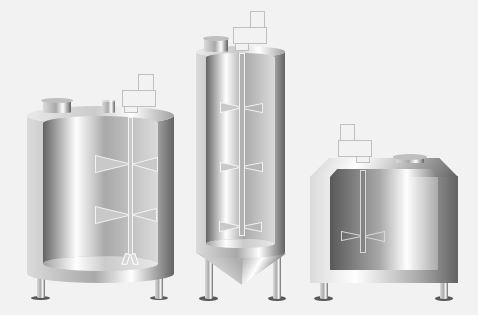Blending tanks play a critical role in various industrial sectors, particularly in manufacturing, food processing, pharmaceuticals, and chemical production. These tanks are designed to efficiently combine different ingredients, liquids, or chemicals into a homogeneous mixture, ensuring consistent quality and composition across products. Understanding the functionality, benefits, and applications of blending tanks can shed light on their importance in industrial processes.
What Are Blending Tanks?
Blending tanks are vessels equipped with specialized agitators or mixers used to combine multiple substances into a uniform blend. The design of these tanks varies depending on the materials being processed, but they often feature stainless steel construction to handle corrosive materials or ensure sanitation in food and pharmaceutical applications. These tanks come in various sizes, ranging from small containers for laboratory use to large industrial tanks capable of holding thousands of gallons.
Key Components of Blending Tanks
Blending tanks typically consist of several critical components that aid in efficient mixing:
- Agitators: These are mechanical devices inside the tank that create the movement needed to blend materials. They vary in design, including paddle mixers, propeller agitators, and turbine mixers, depending on the application.
- Baffles: Baffles are internal plates attached to the tank walls, preventing vortex formation and promoting thorough mixing. This enhances the effectiveness of the agitation process.
- Heating and Cooling Jackets: In certain applications, precise temperature control is necessary. Tanks may have jackets or coils that allow temperature adjustments through heating or cooling systems.
- Sensors and Control Systems: Many modern blending tanks are equipped with sensors and automated systems that monitor variables like temperature, pressure, and mixing speed, ensuring optimal operation.
Applications of Blending Tanks in Various Industries
Blending tanks are widely used across industries, with specific applications tailored to the needs of each sector.
1. Food and Beverage Industry
In food processing, blending tanks are vital for producing beverages, sauces, dressings, and dairy products. They ensure uniform consistency, proper flavor distribution, and safe handling of sensitive ingredients. Food-grade tanks are often made of stainless steel and adhere to strict hygiene standards.
2. Pharmaceutical Industry
In pharmaceutical production, blending tanks are used to mix active ingredients, excipients, and liquids to create medicinal products like syrups, creams, and ointments. Precision and sterility are paramount in this industry, and tanks must comply with Good Manufacturing Practices (GMP) and other regulatory requirements.
3. Chemical Processing
Blending tanks in the chemical industry mix various raw materials to produce products like adhesives, lubricants, and solvents. They are designed to withstand corrosive substances and high temperatures while ensuring that hazardous chemicals are blended safely.
4. Cosmetic and Personal Care Products
For producing lotions, shampoos, and creams, blending tanks are essential for achieving smooth and consistent textures. These tanks maintain product stability while enabling the incorporation of delicate ingredients like essential oils and fragrances.
Benefits of Using Blending Tanks
The integration of blending tanks into industrial processes offers numerous advantages:
- Consistent Product Quality: Blending tanks ensure that all components are mixed evenly, resulting in a consistent product with uniform properties.
- Increased Efficiency: Automated blending systems save time and labor by combining ingredients more quickly and accurately than manual methods.
- Enhanced Safety: Tanks equipped with modern control systems and safety features reduce the risk of accidents, especially in handling hazardous materials.
- Scalability: Blending tanks come in various sizes, making it easier for businesses to scale production up or down depending on demand.
- Cost Savings: By optimizing the blending process and minimizing waste, companies can lower operational costs and improve profitability.
Choosing the Right Blending Tank for Your Needs
When selecting a blending tank, several factors need to be considered:
- Material Compatibility: Ensure the tank material (e.g., stainless steel, plastic) is suitable for the substances being mixed.
- Capacity: Choose a tank size that matches your production volume while allowing for future expansion.
- Mixing Requirements: The type of agitator or mixer should align with the viscosity and properties of the materials being processed.
- Temperature and Pressure: If the process involves temperature control or high-pressure mixing, the tank should be equipped with the appropriate systems.
Conclusion
Blending tanks are indispensable tools in modern industrial processes, ensuring that raw materials are efficiently combined into high-quality final products. Whether in food processing, pharmaceuticals, or chemical manufacturing, these tanks contribute to product consistency, safety, and production efficiency. By selecting the right blending tank and maintaining it properly, industries can optimize their operations and deliver superior products to the market.










